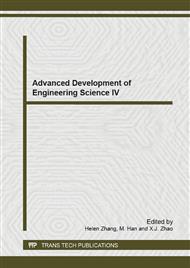p.161
p.165
p.169
p.174
p.177
p.182
p.187
p.191
p.196
Aerodynamic and Numerical Study on the Influence of Spike Shapes at Mach 1.5
Abstract:
Taking into account the issue of configuration or aerodynamic heating, most supersonic and hypersonic flight vehicles have to use the blunt-nosed body. However, in supersonic especially in hypersonic flow the strong bow shock ahead of the blunt nose introduces a rather high shock drag that affects the aerodynamic performance of the vehicles seriously. A spike mounted on a blunt body during its flight pushes the strong bow shock away from the body surface and forms recirculation flow with low pressure ahead of the body surface, and then decreases the drag. The drag reduction effects of spikes in high supersonic and hypersonic flow had been validated through experimental and numerical methods. In order to analyze the influence of the spike on aerodynamic characteristics at low supersonic (M=1.5) flow past blunt-nosed bodies, numerical studies were carried out which included the influence of the spike shape, the analysis of the fluid flow structures and the effect on the aerodynamic characteristics of a blunt body.
Info:
Periodical:
Pages:
177-181
Citation:
Online since:
October 2014
Authors:
Keywords:
Price:
Сopyright:
© 2014 Trans Tech Publications Ltd. All Rights Reserved
Share:
Citation:


